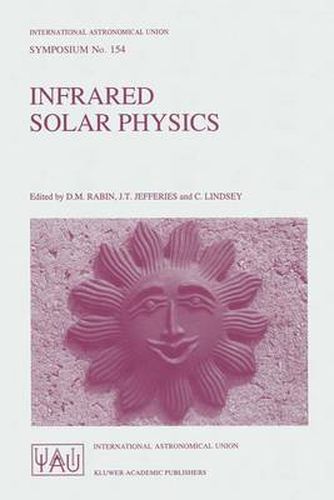Readings Newsletter
Become a Readings Member to make your shopping experience even easier.
Sign in or sign up for free!
You’re not far away from qualifying for FREE standard shipping within Australia
You’ve qualified for FREE standard shipping within Australia
The cart is loading…






Infrared Solar Physics contains the proceedings of the 154th Symposium of the International Astronomical Union. Aimed at active workers and graduate students in solar physics, this volume provides a comprehensive view of a rapidly expanding discipline that gives us a new perspective on the sun. Measurements across the wide infrared spectral range can probe the solar atmosphere from below the visible surface through the outer reaches of the corona. Taking full advantage of revolutionary advances in detector technology, infrared observations from the ground, aircraft and space have led to a better understanding of solar magnetic fields, atmospheric structure and activity, and elemental abundances. The infrared has also provided new interpretive challenges, such as the appearance of the 12mm emission lines of magnesium. These and other developments are discussed by leading contributors, who also give their perspectives on the future of this field of study.
$9.00 standard shipping within Australia
FREE standard shipping within Australia for orders over $100.00
Express & International shipping calculated at checkout
Infrared Solar Physics contains the proceedings of the 154th Symposium of the International Astronomical Union. Aimed at active workers and graduate students in solar physics, this volume provides a comprehensive view of a rapidly expanding discipline that gives us a new perspective on the sun. Measurements across the wide infrared spectral range can probe the solar atmosphere from below the visible surface through the outer reaches of the corona. Taking full advantage of revolutionary advances in detector technology, infrared observations from the ground, aircraft and space have led to a better understanding of solar magnetic fields, atmospheric structure and activity, and elemental abundances. The infrared has also provided new interpretive challenges, such as the appearance of the 12mm emission lines of magnesium. These and other developments are discussed by leading contributors, who also give their perspectives on the future of this field of study.